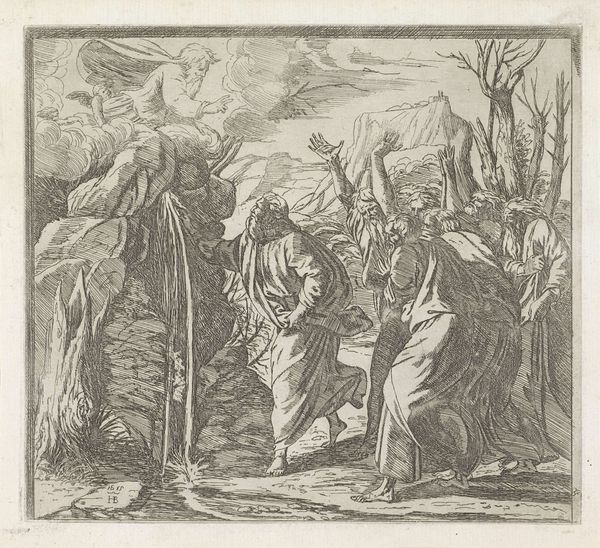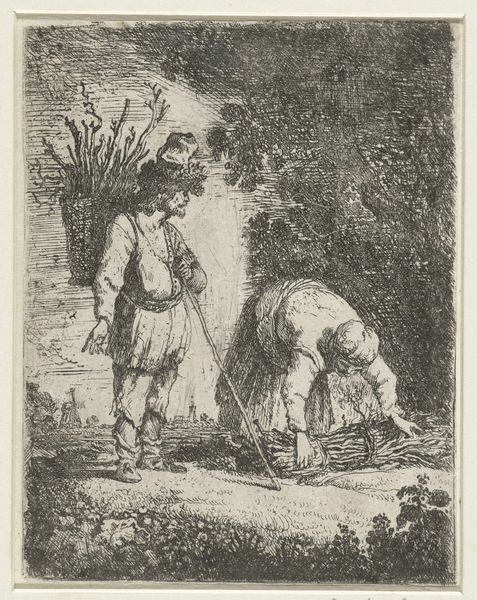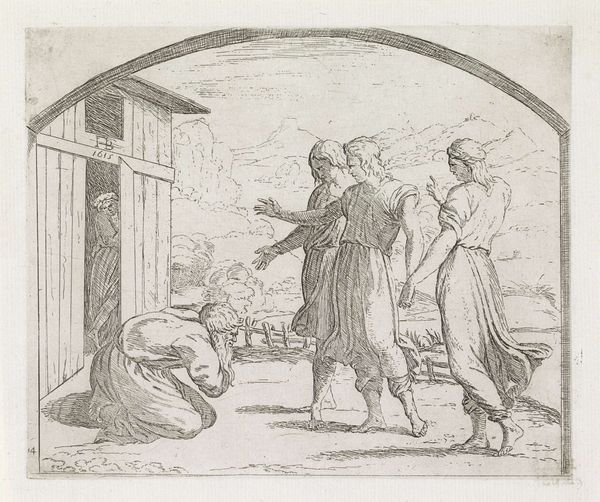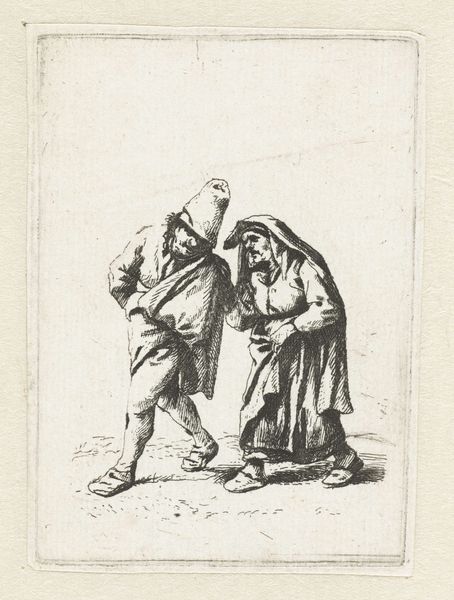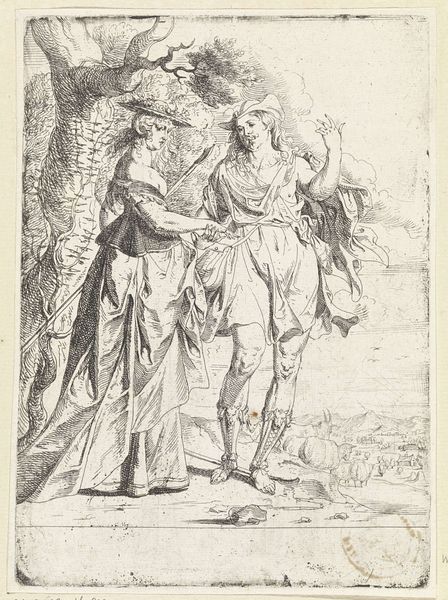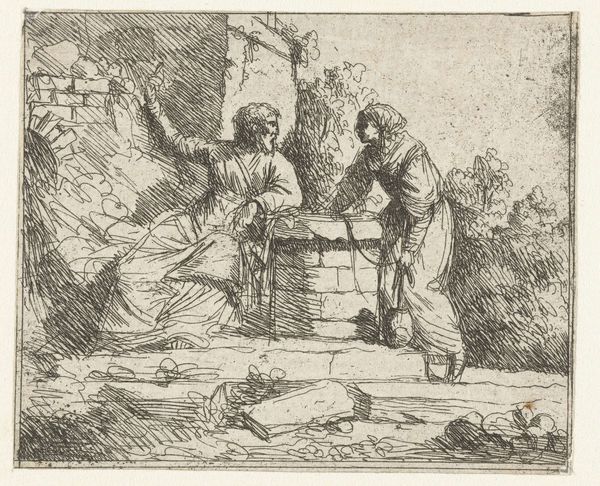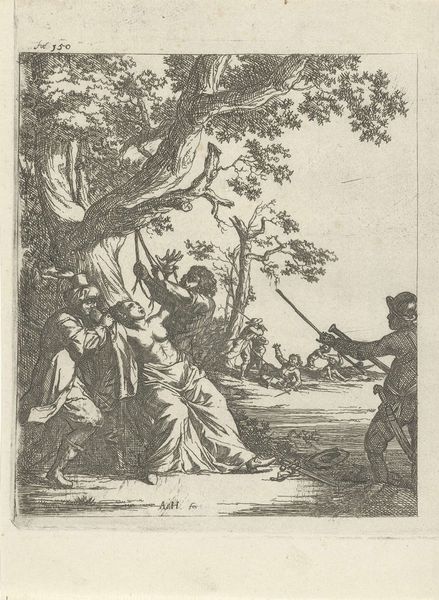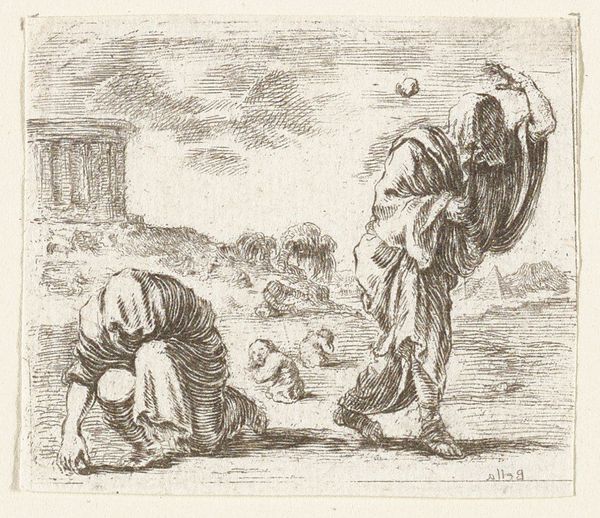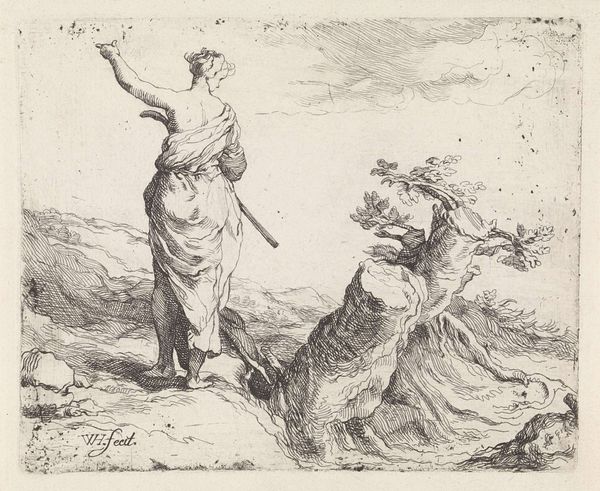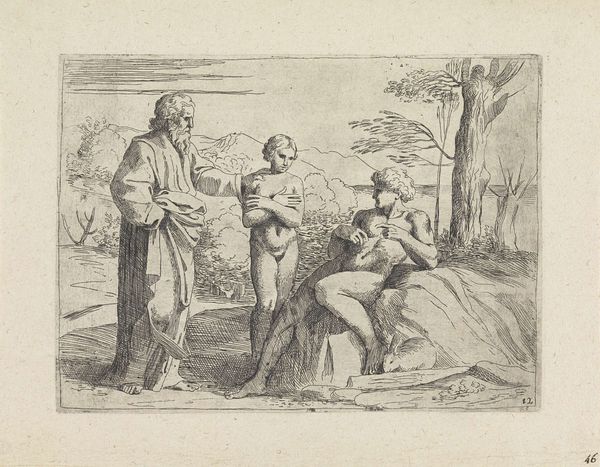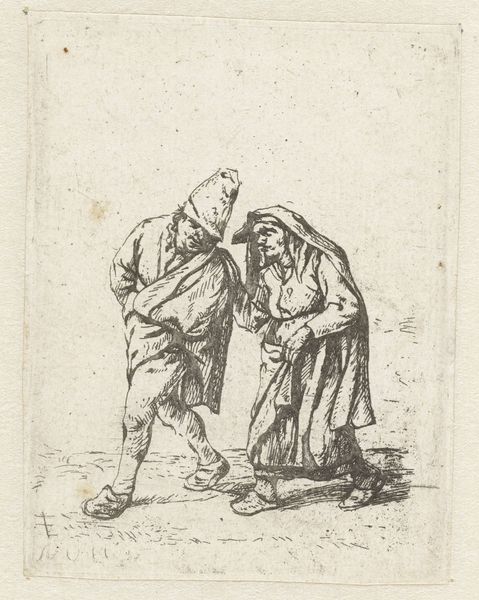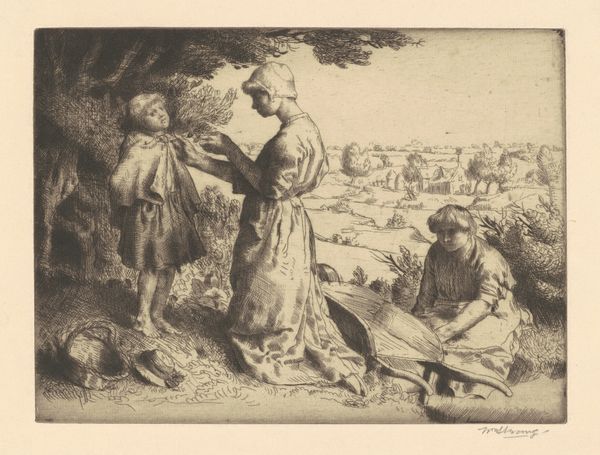
drawing, print, engraving
drawing
landscape
figuration
genre-painting
engraving
realism
Dimensions height 113 mm, width 144 mm
Curator: Here we have “Herder en rund,” which translates to “Shepherd and Cow.” The print, which is located here at the Rijksmuseum, is an anonymous engraving created sometime between 1657 and 1811. Editor: My first impression is one of stillness. The monochromatic etching provides the impression of a very simple and quiet scene. Curator: The rustic simplicity reflects a growing interest in agrarian life. Anonymous artists during this period gave agency to what were considered mundane routines, reflecting an idealization of nature in the cultural narrative. Editor: I'm intrigued by the figure's posture—the shepherd leaning against the... is that a rock formation? He almost blends into it. What's striking is the mirroring of their stances: both figures stand passively. The soft lines against more structured textures guide your eyes across the image. Curator: The formal composition encourages the viewers to consider the societal dynamics at work. Does this placid pose reflect the reality of their lives, or is this tranquility constructed for a more affluent viewership, creating a picturesque scene devoid of genuine insight into rural existence? Editor: Maybe it’s both, no? I can get caught up in trying to dissect meaning from social structure, but it also helps to enjoy the stark contrasts between light and dark, and how they suggest form within a limited palette. Curator: Right, it invites us to be aware of the cultural biases embedded even in the most seemingly straightforward depictions of life, nudging us to question the narratives they present. Editor: I agree, analyzing how that aesthetic stillness intersects with those socio-historical perspectives ultimately elevates it for me. Curator: Well said. It's a great example of the conversation artworks can have with their audiences.
Comments
No comments
Be the first to comment and join the conversation on the ultimate creative platform.
